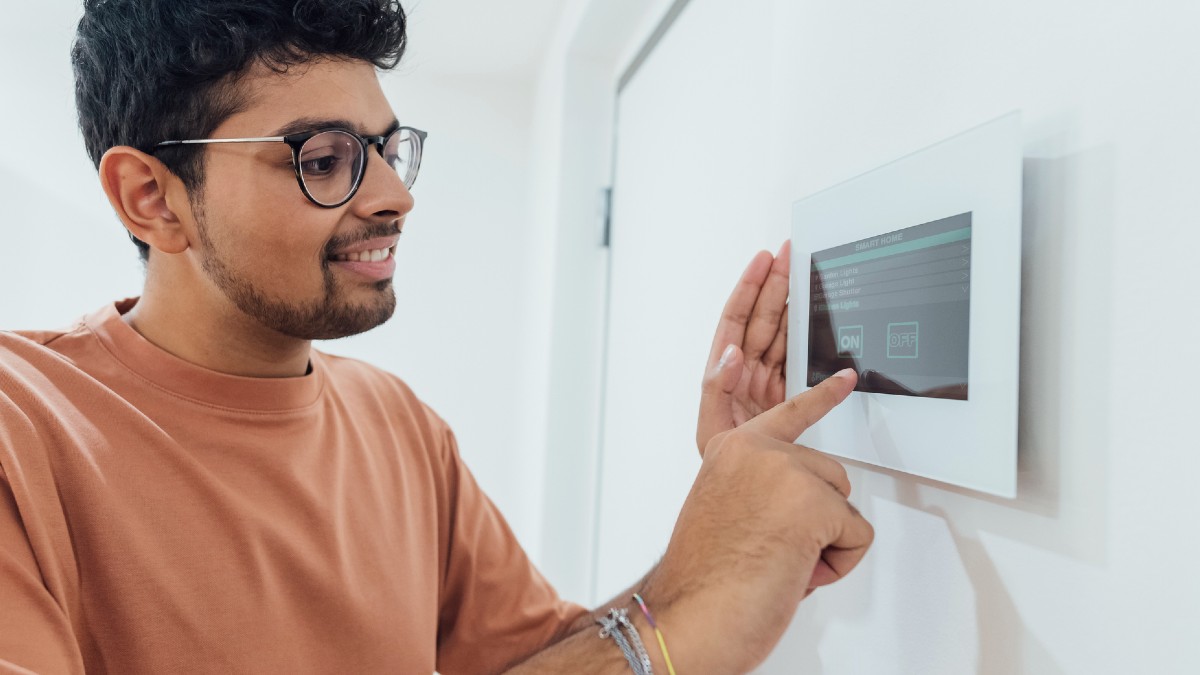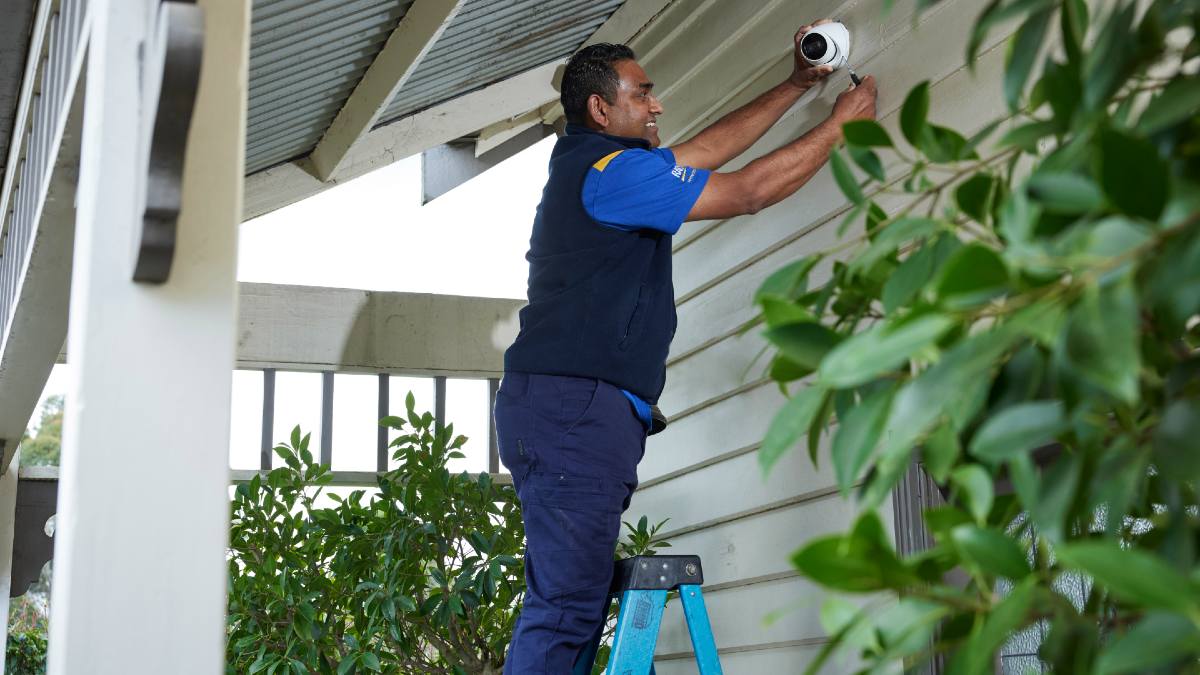Your home is a top target for burglars when you go on holidays. Here’s what burglars are looking for when they break and enter your home, plus how to safeguard your house.
Smart home dangers: cyber security risks of smart homes

Our homes might be getting smarter, but so too are hackers. Here’s what you need to know about your home’s network security and how to safeguard it against digital attacks.
Smart technology offers a host of benefits, but it also comes with security risks.
In today’s increasingly connected world, protecting your home against digital intrusions is just as important as protection from the threat of physical burglaries.
After a spate of security issues connected to the Amazon-acquired Ring doorbell – which saw many reported incidents of unauthorised users hacking into people’s devices and taking control of their doorbells – it raises questions about what people can do to protect themselves, and their properties, from a virtual home invasion.
If a wireless doorbell can be hacked, can burglars also hack your smart door lock? What about your security cameras? Whether your house is filled with smart appliances, or you have a simple wireless speaker or voice assistant, there are steps you can take to reduce the risk of would-be hackers messing with your home, and your privacy.
From smart locks and wireless doorbells to Wi-Fi security cameras, here’s what you need to know about your home’s network security and how to safeguard it against digital attacks.

Most devices that are connected to your Wi-Fi network can be hacked. Image: Getty
Can wireless and smart home devices be hacked?
In simple terms, yes. Any smart home or automation device that’s connected to the internet has the potential to be hacked. Even a smart lightbulb or coffee machine could leave you open to security threats.
While a hacker making your lights flicker might not seem like the biggest issue, RACV Senior Product Manager for Home Trades & Services Nathan Tayeh says serious hacks can happen: “A good example of this is the WannaCry ransomware attack.”
During the 2017 global WannaCry attack, hackers used software to identify vulnerabilities in older versions of Microsoft Windows, then locked users' files and demanded ransom to release them.
This attack highlighted the risks and dangers older devices pose that haven't been updated with new software. If your voice assistant, for example, becomes infected with malware, hackers might be able to access personal information stored on the device – including your voice search history or even banking data.
While smart home devices have their risks, technology is always evolving to ensure your personal information and Wi-Fi network are protected. “Some companies spend a great deal of money on cyber security to keep vulnerabilities and hackers at bay,” Nathan says.
“So when purchasing new smart technology, it pays to do your research. Look into the manufacturer and see what security protocols they put in place to protect your network.
RACV Home Security Systems^ offers tailored security solutions and professional installation by licensed installers, as well as maintenance and servicing across a wide range of security systems.

RACV Home Security Systems off professional servicing and installation by licensed traders.
How can you prevent a cyber attack?
When it comes to your home devices, cybersecurity experts say, "if you can connect it, protect it."
Although it's extremely difficult to completely prevent your home from being hacked, Nathan says there are things you can do to beef up security. In the same way that door and window locks can help protect your home, every added layer of security can help deter hackers and increase the likelihood that they will move on and look for easier targets.
1. Secure your Wi-Fi network
“When you’re setting up your Wi-Fi network, it’s always a good idea to change the default SSID (Service Set Identifier, which is just the name of your Wi-Fi network) to something obscure and make sure you use a strong password,” he says. This is because, out of the box, most routers either use a generic password or are not secured, leaving them vulnerable to hackers who can then access other devices that are connected to the network.
2. Use a strong password
“A strong password is something that’s hard for people or computers to detect or guess,” Nathan says. “Using more than eight characters with a mixture of upper and lower-case letters, special characters and numbers increases your password strength, and try not to use a common word or something associated with your identity, like your last name and date of birth.”
You could also use a passphrase or multi-factor authentification to help keep your networks even more secure. Passphrases are strings of words that are harder to crack but easier to remember. A good passphrase should have four or more words, 14 or more characters and be random and unique - for example, potato mountain yellow house.
Multi-factor authentification is where a user is required to supply multiple proofs of identity to gain access to a service. Types of proof required can include passwords, pins, information, SMS or email codes, or biometrics (e.g. fingerprint scans).
If like most people you’re suffering from password fatigue, a random password or passphrase generator is a great tool for producing hard-to-crack codes, and a password manager can help remember them for you.
3. Set up a separate Wi-Fi network
Most hackers probably don’t care about what’s in your fridge or making your light globes flicker. As well as freeing up bandwidth for streaming or gaming services, keeping your most private or sensitive data on a separate network from your other devices is another way of protecting your data. “Having a separate Wi-Fi network with a different name and password creates a barrier between your smart devices and your home network,” Nathan says. “This can be done on most Wi-Fi routers these days.”
4. Register your devices
Registering your smart device(s) with the manufacturer can help ensure they get the latest firmware updates and security patches. You should also keep your eyes peeled for the latest updates and manually click the ‘update’ button on the app. Running your devices with older versions of firmware or without required security patches can leave you open to hackers.
What should you do if you’ve been hacked?
If your Wi-Fi network is hacked, having anti-virus software on your PC might stop hackers from getting all of your personal data. Nathan says the software will detect the virus attempting to gain access and will block the malware and alert you. “If you think a smart device has been hacked, I would power it down and call the manufacturer’s support/helpline for assistance... they’ll guide you on the best course of action.”
More: Key safe security and theft prevention for homes and apartments
The information provided is general advice only. Before making any decisions please consider your own circumstances and the Product Disclosure Statement and Target Market Determinations. For copies, visit racv.com.au. As distributor, RACV Insurance Services Pty Ltd AFS Licence No. 230039 receives commission for each policy sold or renewed. Product(s) issued by Insurance Manufacturers of Australia Pty Ltd ABN 93 004 208 084 AFS Licence No. 227678.
^RACV Security Pty Ltd ABN 49 079 148 342 trading as RACV Home Security. Security Licence (Vic.) 733-411-10S and Security Registration (Vic.) 733-411-31S.


